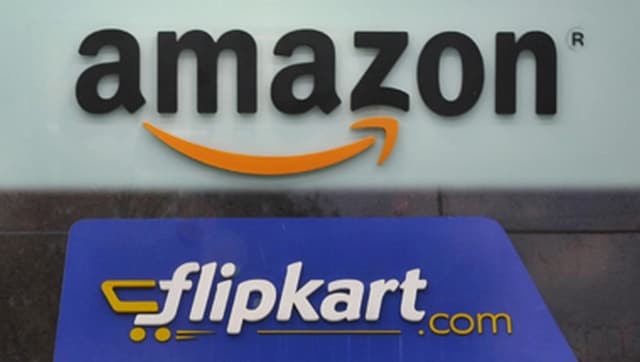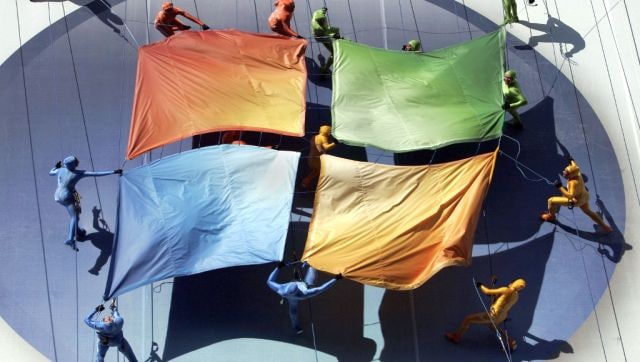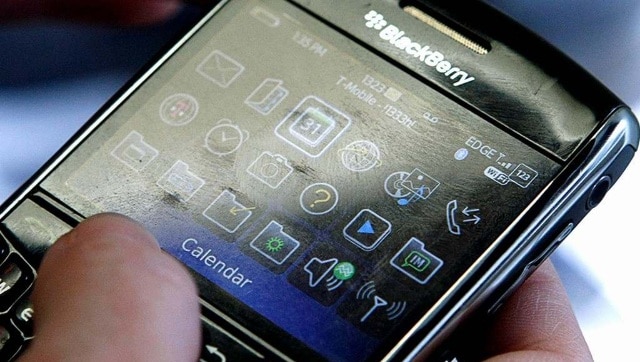
If you found this article, you likely already know what a VPN is and what it’s used for, but just in case you need a brief refresher, here’s a rundown. VPNs are essentially a server that you connect to before you do most of your online activity so that any services, sites, or networks that you connect to see the IP of the VPN, not your own. It’s useful for things like avoiding firewalls, geographical barriers and keeping your personal IP address from falling into the hands of suspicious sites.
Now that that’s out of the way, we can get to the real meat and potatoes of all of this. Which VPN should you be looking into?
In this article, we’re taking a look at two big contenders among the very best VPN services on the market: IPVanish vs ExpressVPN. Both of them fulfill just about every standard requirement of your typical VPN service, but they both have their strong suits, and they both offer unique features that might just make them a more attractive choice for you than the other, depending on how you plan to use them.
IPVanish
IPVanish started in 2012 as nothing but a few dozen servers with some windows software. Now, it has grown into a powerhouse of the VPN market and is consistently rated one of the best VPNs out there. This is why it’s such a shame that IPVanish isn’t talked about nearly as much as certain other names.
IPVanish has grown exponentially as a service in recent years, and its features are now in line with all the other top dogs on the VPN market. It’s consistently rated in the top 10 available VPNs.
ExpressVPN
Starting all the way back in 2009, ExpressVPN is now one of the world’s most extensive VPN services out there. It typically fights with the other prominent heads of the game and has made efforts to offer more features, better service, and more reliability as a result.
Because of this, ExpressVPN is able to contend year after year for the spot of top VPN, and while it can be debated whether it’s the one true king (or queen) of the VPNs, it’s undeniable that its quality certainly earns it the recognition and high placement that it holds on most lists.
The Comparison
Both of these VPN services are clearly pretty impressive. If you’re on the market for a VPN, it’s very unlikely you’d be dissatisfied with either choice. However, we’re writing this article to help you pick the BEST choice for you, not a good choice. So buckle in because here comes the comparison. Let the battle between these two VPN titans commence.
Speed
One of the first factors worth looking into is data speed. No matter which service you use, your download and upload speed are going to take at least a minor hit when you connect to a VPN. In short, this is because when you’re connecting to a website, you don’t just make a direct connection. You access the VPN, which then has to connect to that site. This creates an extra barrier that will add some delay no matter how quick the service is.
The goal is simply to keep that delay as low as possible, and some VPNs do this better than others. While speeds will vary heavily depending on what area you’re trying to connect from and whether or not the VPN has servers around that region, we can still compare the average overall speeds.
Unfortunately for IPVanish, ExpressVPN has them pretty heavily beat in the speed department.
While this gap between the two has certainly diminished in recent years as IPVanish has expanded their server count, ExpressVPN still commonly gets speeds much faster than IPVanish in most regions, especially areas such as the UK.
While your circumstance will vary depending on your location and original internet speed, most users report their original download speed decreasing by about 40-50% with ExpressVPN, and about 50-60% with IPVanish.
That isn’t to say IPVanish is slow. It’s still one of the faster VPNs on the market. But when it’s directly compared with ExpressVPN, the Mbps speeds begin to show a pretty drastic difference.
ExpressVPN wins this one.
Base Location
While this part isn’t exactly a competition, it’s still an essential piece of knowledge to know. Every VPN service has a location that they are based from; their main hub. While this doesn’t tend to affect the service too much, it does play a part in where most of their servers would likely be to offer the fastest and most reliable connections and what country’s laws dictate the services that VPN can provide.
ExpressVPN’s home base enjoys the warm sun of the Caribbean, stationed in the British Virgin Islands.
IPVanish, on the other hand, is based in Orlando, Florida, in the United States.
This round doesn’t really have a winner.
Supported Platforms
VPN services typically offer software to make using their servers easy for customers. Most big names on the market make this software compatible with all major systems, but some cover more than others.
IPVanish’s software is compatible with Windows, Mac OS, iOS, Linux, Android, Chrome OS, and Fire TV.
It’s a wide, versatile range that would suit a majority of users’ needs. However, the app itself has been reported to have problems occasionally. Crashing and timing out, unfortunately, isn’t all too uncommon when attempting to connect to a server.
The software even occasionally tends to mess with your network settings. Reddit user B_Wease, for example, stated that when they turned the service off, they couldn’t connect to their own internet on that device.
The app does show a lot of information and helps check every detail about your connection, but some users might find it a bit cluttered, especially if you don’t know what a lot of that info is even for.
You can download IPVanish’s software here.
ExpressVPN’s software is compatible with Windows, Mac OS, iOS, Linux, Android, Chrome OS, Fire TV, Firestick, Kindle Fire, and Chromebook. ExpressVPN covers an even greater range of devices, impressively enough. Not only that, but most report their service to be far more reliable, as complete crashes are infrequent when connecting to various servers. With their software, usually, the worst you’ll experience is a short delay.
You can find download ExpressVPN’s here.
This round goes to ExpressVPN.
Servers & Countries
The following criteria will be the number of countries each service spans and how many servers each has. We’ll be upfront about this one. ExpressVPN takes this round as well, hands down.
That is, of course, due in part to them having been in the game longer than IPVanish. Every service slowly expands its arsenal and reaches further across the globe to suit the needs of their customers as they grow. ExpressVPN has had more time to do that and has been more successful in doing so.
That isn’t to say IPVanish is struggling in this department. Covering 57 countries with a server count of over 1,900, it has one of the bigger server counts on the VPN market.
Unfortunately, it just doesn’t compare to ExpressVPN’s 3,000+ servers over a total of 95 countries.
ExpressVPN takes this round as well for a hat-trick.
Simultaneous Connections
While things may be looking grim for IPVanish as our underdogs, things might just turn around for them here. All VPN services have a limit on how many connections you can make with their VPN at once. This keeps customers from overloading their servers with too many requests at once and slowing things down for themselves and others. However, the hard limit that services put on their VPNs vary.
ExpressVPN has its limit at five. Five simultaneous connections are relatively standard for most VPNs, and most customers wouldn’t struggle too much with that limit.
IPVanish, however, has its limit at ten. This is actually fairly generous, as most VPNs don’t allow nearly as many simultaneous connections, especially for a standard package. This limit would hardly be a problem for most people to ever wrestle with, as it’s pretty rare for a room to be filled with more than ten computers that all desperately need to access the VPN right this instant.
IPVanish is on the board with a win!
Privacy
This next comparison will be one of the more important ones for many people looking into a VPN service. It’s the main reason why VPNs have become so popular recently. As the digital world grows, people want to feel secure, and knowing your personal IP can be tracked at any time leaves people with an uneasy feeling. This is what has led to the success of the VPN.
So how do you compare privacy? Well, there are two main factors that we’re going to be looking at. The first is the encryption system that each service uses.
Both ExpressVPN and IPVanish use something known as AES 256-bit encryption for their services. AES, or Advanced Encryption Standard, is an encryption method that supports the largest possible bit size and encrypts data to the point where it’s essentially impossible for hackers or anyone who comes across that data to use brute force to access the information. It was initially created for use by the federal government, so yes, it’s pretty secure.
So if your connections are unreadable when you make them, what about after they’ve already been made? What about the logs and records of each connection you’ve made to a VPN?
That’s a significant factor that most people look into for VPN services. Since the whole point of a VPN is to let customers be secure on the internet, the last thing they want is to know that a log of every connection they make is kept somewhere. What would happen in the event of a data breach of their logs? If a record is held somewhere, a hacker could find out even more information from someone using a VPN than if someone wasn’t!
Luckily, neither service keeps logs or records of any kind of traffic. This is one of the features that make both VPNs so popular. It’s quite rare to find services that keep no logs on their user activity whatsoever. ExpressVPN and IPVanish, however, both state that they maintain no data or records of connections from their customers.
This round is a tie!
Customer Support
In a perfect world, it wouldn’t matter what the customer support is for each service, as the product itself would work flawlessly. But until VPNs start singing and butterflies come out of our routers when we connect to them, yes, we will occasionally need customer support.
Both services offer live chat service on their websites, available 24/7. They also both have email support if you prefer to get your help the old-school way.
We have ourselves another tie!
Pricing
Last but certainly not least, we have the price for a plan in our ExpressVPN vs. IPVanish battle. Both of these services offer multiple payment plan options, where you will receive a discount for buying longer-term plans. However, for this, we’ll be looking purely at the monthly plan for each.
Both of these services have prices that put them right at about the average for most VPNs. For a monthly plan, ExpressVPN will cost you $12.95, whereas IPVanish costs a cool $9.99, making it actually on the lower end of average VPN costs.
IPVanish takes this last round.
ExpressVPN vs. IPVanish, which is better?
While both of these services are excellent, there’s a reason why ExpressVPN is fighting to take the crown. Under most circumstances, ExpressVPN does offer a higher quality service. Its speeds are superior, it has higher server counts, and it’s frequently rated as one of the best VPNs out there.
However, there are a few places where IPVanish takes the lead, such as the generous ten simultaneous connections that it allows you to have at one time. The cheaper pricing all makes it a serious contender. If ExpressVPN’s prices feel a little steep to you, IPVanish offers a genuinely excellent service for a reduced plan cost.
Here is a visual of everything to keep in mind between the two.
|
IPVanish
|
ExpressVPN
|
| General Rating |
4.8 / 5
|
4.9 / 5
|
|
Based In
|
United States |
British Virgin Islands
|
|
Unlimited Bandwidth
|
Yes |
Yes
|
| Unlimited Server Switching |
Yes
|
Yes
|
|
Country Count
|
57 |
95
|
|
Server Count
|
1,900+ |
3,000+
|
|
Encryption
|
AES 256-bit |
AES 256-bit
|
| Logging |
No
|
No
|
| Simultaneous Connections |
10
|
5
|
| Customer Support |
24/7 Live Chat
+ Email
|
24/7 Live Chat
+ Email
|
Just remember, if you choose either of these, rest assured that you will be getting a quality service no matter what. Both are trusted, both are reliable, and both are high-end VPNs.
In the end, it comes down to customer preference.

















